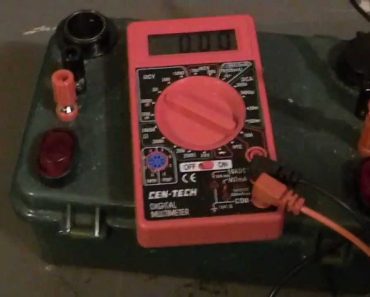
Being a DIY’er is a lot like being a gun guy. Any self respecting gun guy has (at one time or another) bought a gun simply because he had either a holster or an odd box of ammunition that he didn’t have a gun for.
This DIY Battery Pack project is like that. I had batteries, so I needed to do something with them.
Recently I was gifted some sealed lead acid batteries from a hospital. Like smoke detector batteries these get replaced on a time table that does not account for useful life. Sometimes it’s better to spend a little extra than risk a failure of a piece of life safety gear. So now I have three neat little batteries and am compelled to find a way to use them.
Anyway these are small sealed 12 volt batteries. They don’t have enough capacity to do very much useful work by themselves. However, they were fully charged and designed to be recharged over and over.
I figure having a small battery pack would be a lot easier to tote than a dirty car battery. While I am at it, having some inputs like a cigarette lighter socket and some terminal posts would make it even better. Add in some lighted switches and I would have a full fledged project.
Since I had three small batteries I had to decide how to wire them together. I could either wire them in series to make them stronger, or in parallel to make them last longer.
Series
In series you basically wire them end to end. Like in a flashlight where the positive terminal of one battery is in contact with the negative terminal of the next. If you do this then you make one big battery. Three 12 volt batteries wired in series would give me 36 volts. However, they could not last very long. It’s like having three jugs of water and dumping them all out at the same time. You get a lot of water, but it runs out fast.
Parallel
Since I don’t have any 36 volt gear to run, and I would rather get more time I decided on wiring them in parallel. That is running a wire from one positive terminal to the next and running a separate wire from the negative terminal to the next. This daisy chains all the like terminals together. Using the water jug analogy, this would be stacking the jugs on top of each other and poking holes so that each jug fills the jug below it.
Consequently, this gives me the same flow as a single jug, but for a longer time. Running in parallel does not increase the voltage. What is does is to increase the time I have to use the batteries.
What I Needed
I went to the local electronics store and bought some spade connecters. The spades were small enough to fit on the battery terminals. The lugs were large enough to fit two 14 gauge wires. I needed to fit two wires, as each spade clip needed to be wired to the battery before and after it.
ITwo lighted 12 volt automotive switches, two sets of terminal posts, two sets of 12 volt cigarette lighter outlets, and some shrink tube were also purchased.
My plan was to insert a rectifier diode to each end so one set of switches and outlets would be for charging. However I could not find the right sized diodes.
My solar kit has a charger controller with multiple inputs and fuses. I plan on using that in my upcoming projects because it has a built in meter and I won’t have to worry about back feeding.
Any radios I may use with this pack also have fuses on the input wires so I don’t have to worry about blowing them up either. Basically this is just a portable battery with some fancy switches.
Check Before Boxing Up
After I wired everything up, I checked it to make sure it all worked and I didn’t have any shorts. Then I had to find a decent looking project box for it.
I had originally planned on using a metal ammunition can for the project box. After some careful consideration, I decided that putting a bunch of wiring and batteries inside a metal box might not bode well for my homeowner’s insurance.
What I ended up using was a small military surplus plastic first aid kit box. A very sharp chisel lifted the embossed writing and cross from the top of the box. Fine sandpaper made it smooth enough. Rattle can green spray-paint covered up the majority of my mistakes with the chisel.
I then took the appropriate sized drill bits and drilled holes for the switches and plugs. Of course I first made sure everything would fit after installation.
Finally, it was a tight fit, and I had to electric tape the batteries together so I could get them in just the right place to close the box. However, I think that just makes everything easier. Now there won’t be any shifting inside to cause damage to my poor soldering skills.

